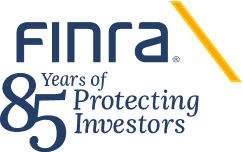Stock Up on Information Before Buying Stock

There are well over 20,000 companies whose shares trade either on a U.S. exchange or in over-the-counter markets, each with a unique ticker symbol. With so many companies and trading symbols, there’s ample opportunity to confuse one company’s ticker with another—and good reason to carefully research any investment before making a purchase.
Fundamental research and an understanding about the way in which stocks are listed and traded can go a long way toward helping you make sound investment decisions. These tips can help ensure that you understand what you’re buying and avoid potentially costly mistakes.
- Make sure you're buying the intended security. U.S. common stock symbols can contain up to five letters and might resemble the name of more than one company. In addition, symbols can be changed or reassigned. When placing an order, make sure that the symbol you enter corresponds to the company whose shares you intended to purchase.
For example, in early 2020, some investors saw an opportunity to capitalize on the sudden surge of virtual gatherings through Zoom videoconferencing software by purchasing the company’s stock. However, there was potential for confusion between three different companies with “Zoom” in their names: Zoom Technologies, Inc. (ZOOM), Zoom Video Communications (ZM), and Zoom Telephonics (ZMTP). Investors who wanted to purchase ZM might have been disappointed if they acted too quickly and ended up with shares of ZOOM or ZMTP instead.
- Research the company. Do your homework by thoroughly evaluating the company before you purchase its stock. While the internet has made this research easier than ever, it’s also home to misinformation. Verify any information you’ve heard about a company against its public filings.
A good place to start is the SEC's EDGAR database. EDGAR provides a wealth of information for publicly traded companies, including registration statements and prospectuses. You can also find periodic reports that publicly traded companies are required to file and information about recent corporate events.
Keep in mind that just because a company has registered its securities or filed reports with the SEC doesn’t mean it will be a good investment or the right fit for you. Also, remember that not all financial information filed with the SEC, or published elsewhere, is independently audited. Unaudited financials are just that—not reviewed by an independent third party.
If you’re considering investing in a private placement, be aware that these offerings aren’t subject to the same disclosure requirements as registered securities. Do your due diligence about the issuer and the company so that you fully understand the investment and its risks.
- Find out where the stock trades. Many stock information services will tell you where the stock is listed or whether it’s quoted over-the-counter. Companies that list their securities on Nasdaq, the New York Stock Exchange (NYSE), Cboe or other registered national securities exchanges generally have to meet defined quantitative standards that the exchanges set. They also have to file regular reports with the SEC, including an annual report on Form 10-K (for U.S. issuers) or Form 20-F (for non-U.S. issuers) along with audited financial statements.
In contrast, there are generally no minimum quantitative standards that a company must meet to have its securities quoted over-the-counter. Many securities quoted over-the-counter trade infrequently and might be volatile, which might make it difficult to sell your security later at the desired price.
- Mind your "Q"s. A fifth letter "Q" at the end of a stock’s trading symbol often denotes bankruptcy status of the quoted company. Securities of a company in bankruptcy might continue to trade after the company has filed for bankruptcy protection and before it emerges from these proceedings. However, investors shouldn’t interpret that as indicating the shares have any value; often, companies’ reorganization plans cancel existing shares. In other words, "Q" is reason for caution.
- Understand the IPO Process. An initial public offering, or IPO, is a way for a company to raise capital by selling shares of its stock to the general public. As the SEC notes in its updated Investor Bulletin Investing in an IPO, there are a number of steps in the IPO process that must be fulfilled before the public can purchase shares. And while there are permissible ways for some categories of investors to purchase unregistered shares in a private company before its IPO, you should be extremely wary of pre-IPO speculation. It can be very risky—and even illegal.
Learn more about investing in stocks.



